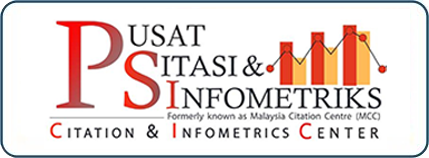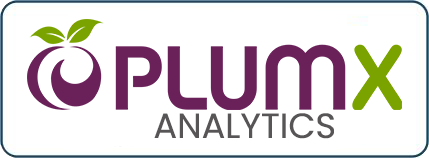Identification of Chemical Profiles of Aromatherapeutic Compounds in Commercial Fragrances and Their Potential to Modulate Emotional States
DOI:
https://doi.org/10.33102/mjosht.435Keywords:
Aromatherapy, Chromatography, Chemical Profile, Fragrance, Gas Chromatography-Mass Spectrometer (GC-MS)Abstract
Aromatherapy, a holistic healing treatment that uses natural plant extracts, has been widely recognized for improving psychological well-being. This research aims to identify and quantify the key compounds in a range of commercially available fragrances and analyze their potential therapeutic effects and benefits. Using advanced chromatographic techniques and mass spectrometry, the composition of aromatherapeutic compounds in selected fragrances were determined. The findings indicate that specific aromatherapeutic compounds, such as vanilin, azulene, furanone, thujopsene, lilial, cedrol, pinene, piperonal, ethylene brassylate, butylated hydroxytoluene, and limonene, have distinct effects on emotional state. This comparative analysis highlights both similarities and differences in their chemical profiles in their potential to modulate emotional states. It underscores the potential of aromatherapy as a complementary approach to emotional well-being. The study provides valuable insights for the fragrance industry, healthcare practitioners, and consumers seeking to leverage the benefits of aromatherapy for emotional regulation.
Downloads
References
Vora, L. K., Gholap, A. D., Hatvate, N. T., Naren, P., Khan, S., Chavda, V. P., ... & Khatri, D. K. (2024). Essential oils for clinical aromatherapy: a comprehensive review. Journal of Ethnopharmacology, 118180. https://doi.org/10.1016/j.jep.2024.118180.
Cui, J., Li, M., Wei, Y., Li, H., He, X., Yang, Q., ... & Qin, D. (2022). Inhalation aromatherapy via brain-targeted nasal delivery: Natural volatiles or essential oils on mood disorders. Frontiers in Pharmacology, 13, 860043.https://doi.org/10.3389/fphar.2022.860043
Maggioni, E. (2015). The Smell of Emotions: Olfactory Influences on Emotions and Consumer Behaviour. https://hdl.handle.net/10281/70695
Hubschmann, H. J. (2015). Handbook of GC-MS: Fundamentals and Applications. John Wiley & Sons.
Shi, T., Qi, M., & Huang, X. (2020). High-resolution performance of triptycene functionalized with polycaprolactones for gas chromatography. Journal of Chromatography A, 1614, 460714. https://doi.org/10.1016/j.chroma.2019.460714.
Stashenko, E., & Martínez, J. R. (2014). Gas chromatography-mass spectrometry. Advances in Gas Chromatography, 1-38.
Karasek, F. W., & Clement, R. E. (2012). Basic gas chromatography-mass spectrometry: Principles and techniques. Elsevier.
Sparkman, O. D., Penton, Z., & Kitson, F. G. (2011). Gas chromatography and mass spectrometry: A practical guide. Academic press.
Veenaas, C., Linusson, A., & Haglund, P. (2018). Retention-time prediction in comprehensive two-dimensional gas chromatography to aid identification of unknown contaminants. Analytical and Bioanalytical Chemistry, 410, 7931-7941. https://doi.org/10.1007/s00216-018-1415-x.
Milman, B. L. (2015). General principles of identification by mass spectrometry. TrAC Trends in Analytical Chemistry, 69, 24-33. https://doi.org/10.1016/j.trac.2014.12.009.
Louw, S. (2021). Recent trends in the chromatographic analysis of volatile flavor and fragrance compounds: Annual review 2020. Analytical Science Advances, 2(3-4), 157-170. https://doi.org/10.1002/ansa.202000158.
Anandakumar, P., Kamaraj, S., & Vanitha, M. K. (2021). D‐limonene: A multifunctional compound with potent therapeutic effects. Journal of Food Biochemistry, 45(1), e13566. https://doi.org/10.1111/jfbc.13566.
Vieira, A. J., Beserra, F. P., Souza, M. C., Totti, B. M., & Rozza, A. L. (2018). Limonene: Aroma of innovation in health and disease. Chemico-Biological Interactions, 283, 97-106. https://doi.org/10.1016/j.cbi.2018.02.007.
Bakun, P., Czarczynska-Goslinska, B., Goslinski, T., & Lijewski, S. (2021). In vitro and in vivo biological activities of azulene derivatives with potential applications in medicine. Medicinal Chemistry Research, 30, 834-846. https://doi.org/10.1007/s00044-021-02701-0.
Akram, W., Tagde, P., Ahmed, S., Arora, S., Emran, T. B., Babalghith, A. O., & Simal-Gandara, J. (2023). Guaiazulene and related compounds: A review of current perspective on biomedical applications. Life Sciences, 121389. https://doi.org/10.1016/j.lfs.2023.121389.
Darrell, N. (2022). Essential oils: A concise manual of their therapeutic use in herbal and aromatic medicine. Aeon Books.
Ghosh, C., Singh, V., Grandy, J., & Pawliszyn, J. (2020). Development and validation of a headspace needle-trap method for rapid quantitative estimation of butylated hydroxytoluene from cosmetics by hand-portable GC-MS. RSC Advances, 10(11), 6671-6677. DOI: 10.1039/C9RA08676E.
Li, X. L., Meng, D. L., Zhao, J., & Yang, Y. L. (2014). Determination of synthetic phenolic antioxidants in essence perfume by high performance liquid chromatography with vortex-assisted, cloud-point extraction using AEO-9. Chinese Chemical Letters, 25(8), 1198-1202. https://doi.org/10.1080/01496395.2018.1446983.
Thiviya, P., Gamage, A., Piumali, D., Merah, O., & Madhujith, T. (2021). Apiaceae as an important source of antioxidants and their applications. Cosmetics, 8(4), 111. https://doi.org/10.3390/cosmetics8040111.
Schroeder, M., Mathys, M., Ehrensperger, N., & Büchel, M. (2014). γ‐Unsaturated aldehydes as potential lilial replacers. Chemistry & biodiversity, 11(10), 1651-1673. DOI: 10.1021/acs.orglett.9b00765.
Zeng, F., Xu, P., Tan, K., Zarbin, P. H., & Leal, W. S. (2018). Methyl dihydrojasmonate and lilial are the constituents with an" off-label" insect repellence in perfumes. PLoS One, 13(6), e0199386. https://doi.org/10.1016/j.ibmb.2019.103224.
Soares, R. M. C. (2016). Detection of synthetic musks and UV-filters in carpobrotus edulis by QuEChERS/GC-MS.
Nakano, A. K. (2019). Understanding Fragrance: From Chemistry to emotion. Cosmetic Formulation: Principles and Practice, 263-277.
Mukai, A., Takahashi, K., Kofujita, H., & Ashitani, T. (2019). Antitermite and antifungal activities of thujopsene natural autoxidation products. European Journal of Wood and Wood Products, 77, 311-317. https://doi.org/10.1007/s00107-018-1370-4.
Baldovini, N., & Filippi, J. J. (2017). Natural fragrant raw materials. Springer Handbook of Odor, 11-12. https://doi.org/10.1007/978-3-319-26932-0_3.
Jin, Z., Ro, D. K., Kim, S. U., & Kwon, M. (2022). Piperonal synthase from black pepper, piper nigrum synthesizes a phenolic aroma compound, piperonal, as a CoA-independent catalysis. Applied Biological Chemistry, 65(1), 1-5. https://doi.org/10.1186/s13765-022-00691-0.
Ramos, A. M., & Cremasco, M. A. (2015). Equilibrium thermodynamics and mass transfer parameters estimation of the synthesis products of piperonal from essential oil of piper hispidinervum C. DC by reversed phase liquid chromatography. Scientia Amazonia, 4(1), 9. ISSN:2238.1910.
Banerjee, G., & Chattopadhyay, P. (2019). Vanillin biotechnology: the perspectives and future. Journal of the Science of Food and Agriculture, 99(2), 499-506. https://doi.org/10.1002/jsfa.9303.
Arya, S. S., Rookes, J. E., Cahill, D. M., & Lenka, S. K. (2021). Vanillin: A review on the therapeutic prospects of a popular flavouring molecule. Advances in traditional medicine, 1-17. https://doi.org/10.1007/s13596-020-00531-w.
Batur, Ö. Ö., Kiran, İ., Baser, K. H. C., & Demirci, F. (2023). Fungal biotransformation of cedryl formate. Hacettepe Journal of Biology and Chemistry, 51(3), 283-287. https://doi.org/10.15671/hjbc.1244894.
Özşen Batur, Ö. Z. G. E., Kiran, İ., Demirci, F., & Başer, K. H. C. (2022). Fungal biotransformation of cedramber. Biocatalysis and Biotransformation, 40(4), 248-251. https://doi.org/10.1080/10242422.2021.1956908.
Jeong, H. U., Kwon, S. S., Kong, T. Y., Kim, J. H., & Lee, H. S. (2014). Inhibitory effects of cedrol, β-cedrene, and thujopsene on cytochrome P450 enzyme activities in human liver microsomes. Journal of Toxicology and Environmental Health, Part A, 77(22-24), 1522-1532. https://doi.org/10.1002/ffj.3496.
Rhind, J. P. (2014). Listening to scent: An olfactory journey with aromatic plants and their extracts. Book of Singing Dragon.
Kim, M., Sowndhararajan, K., Park, S. J., & Kim, S. (2018). Effect of inhalation of isomers,(+)-α-pinene and (+)-β-pinene on human electroencephalographic activity according to gender difference. European Journal of Integrative Medicine, 17, 33-39. https://doi.org/10.1016/j.eujim.2017.11.005.
Weston-Green, K., Clunas, H., & Jimenez Naranjo, C. (2021). A review of the potential use of pinene and linalool as terpene-based medicines for brain health: Discovering novel therapeutics in the flavours and fragrances of cannabis. Frontiers in Psychiatry, 12, 583211. https://doi.org/10.3389/fpsyt.2021.583211.
Vespermann, K. A., Paulino, B. N., Barcelos, M. C., Pessôa, M. G., Pastore, G. M., & Molina, G. (2017). Biotransformation of α-and β-pinene into flavor compounds. Applied Microbiology and Biotechnology, 101, 1805-1817. https://doi.org/10.1002/9781119434436.ch5.
Haag, F., Hoffmann, S., & Krautwurst, D. (2021). Key food furanones furaneol and sotolone specifically activate distinct odorant receptors. Journal of Agricultural and Food Chemistry, 69(37), 10999-11005. https://pubs.acs.org/doi/10.1021/acs.jafc.1c03314.
Arihara, K., Yokoyama, I., & Ohata, M. (2019). DMHF (2, 5-dimethyl-4-hydroxy-3 (2H)-furanone), a volatile food component with attractive sensory properties, brings physiological functions through inhalation. Advances in Food and Nutrition Research, 89, 239-258. https://doi.org/10.1016/bs.afnr.2019.05.001.
Omanakuttan, V. K., John, J., & Hopf, H. (2021). Synthesis of 3 (2H)‐furanones: A review. European Journal of Organic Chemistry, 2021(2), 163-201. https://doi.org/10.1002/ejoc.202001005.
Downloads
Published
Issue
Section
License
Copyright (c) 2025 Muhammad Zaim Kashfi Zaman , Sofina Tamam

This work is licensed under a Creative Commons Attribution 4.0 International License.
The copyright of this article will be vested to author(s) and granted the journal right of first publication with the work simultaneously licensed under the Creative Commons Attribution 4.0 International (CC BY 4.0) license, unless otherwise stated.














